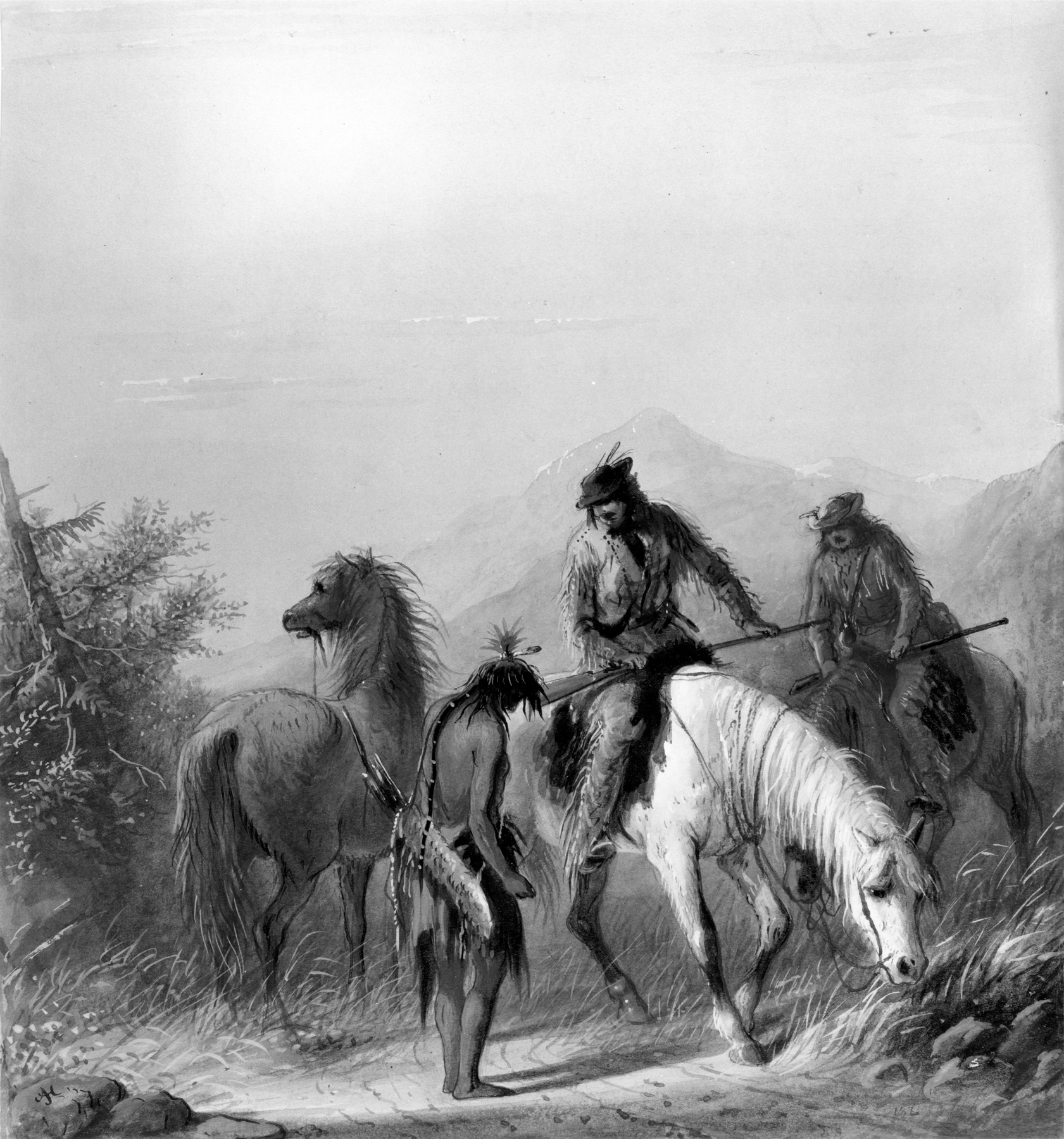The Indian Oracle
(18th and 19th Centuries )
Extracts from Alfred Jacob Miller’s original text, which accompanied his images of Native Americans, are included below for reference. These words, which shaped how Miller’s contemporaries viewed the watercolors, reveal the racism and sexism embedded in 19th-century exploration and colonization of the western part of what is today the United States.
"The Indians of North America have no further knowledge of Astronomy than perhaps to point out the North or Polar star, by which they travel at night;- their knowledge of Geography is also very limited, yet they draw with tolerable accuracy charts of places visited by them. They show an amazing facility in tracing the passage of a man or beast, either over leaves, grass, or the earth, and describe accurately from foot-prints, ruts, and other impressions left on the ground (if recent) how many persons, the number of horses or mules, the number of lodges, whether whites or Indians and numberous other particulars, with a certainty and decision most remarkable. This wonderful power can only be attained by close attention, unwearied patience, and long experience. The subject of the skethc is a Snake Indian describing from certain marks on the ground, the particulars of a party who have passed in advance." A.J. Miller, extracted from "The West of Alfred Jacob Miller" (1837).
In July 1858 William T. Walters commissioned 200 watercolors at twelve dollars apiece from Baltimore born artist Alfred Jacob Miller. These paintings were each accompanied by a descriptive text, and were delivered in installments over the next twenty-one months and ultimately were bound in three albums. Transcriptions of field-sketches drawn during the 1837 expedition that Miller had undertaken to the annual fur-trader's rendezvous in the Green River Valley (in what is now western Wyoming), these watercolors are a unique record of the closing years of the western fur trade.
Inscription
Provenance
Provenance (from the French provenir, 'to come from/forth') is the chronology of the ownership, custody, or location of a historical object. Learn more about provenance at the Walters.
William T. Walters, Baltimore, 1858-1860, by commission; Henry Walters, Baltimore, 1894, by inheritance; Walters Art Museum, 1931, by bequest.
Geographies
USA (Place of Origin)
Measurements
H: 11 x W: 9 7/8 in. (27.9 x 25.1 cm)
Credit Line
Commissioned by William T. Walters, 1858-1860
Location in Museum
Not on view
Accession Number
In libraries, galleries, museums, and archives, an accession number is a unique identifier assigned to each object in the collection.
In libraries, galleries, museums, and archives, an accession number is a unique identifier assigned to each object in the collection.
37.1940.182







